GIGABYTE's server division has started sales of its first servers based on Cavium’s ThunderX2 processors with up to 32 cores. Being among the primary companies to begin selling machines powered by these CPUs, GIGABYTE offers a lineup of two servers designed for cloud and HPC applications.
GIGABYTE’s family of ThunderX2 servers currently includes two machines: the 1U R181-T90 and the 2U R281-T91. Both servers are based on Cavium’s ThunderX2 CN9975 processor featuring 28 cores running at 2.0 GHz as well as GIGABYTE’s MT91-FS1 motherboard (offered with slightly different configurations). The manufacturer promises that it will release other versions of the ThunderX2 machines based on faster 28-core and 32-core processors shortly, but does not elaborate. The platform has 28 DIMM slots supporting up to 1536 GB of DDR4 memory per box (792 GB of octa-channel memory per socket). The 1U server can support up to 10 2.5-inch drivers, whereas the 2U machine can connect up to 26 2.5-inch storage devices.
When it comes to expansion capabilities, the 1U R181-T90 supports two PCIe 3.0 x16/OCP slots, one PCIe 3.0 x16 slot, and two PCIe 3.0 x8 slots. The bigger 2U R281-T91 can naturally attach considerably more add-on components as it features two PCIe 3.0 x16/OCP slots, three PCIe 3.0 x16 slot, and five PCIe 3.0 x8 slots (check exact configurations in the table below). As for network connectivity, both machines are outfitted with two 10GbE QLogic QL41102 controllers as well as one GbE port for management.
GIGABYTE’s R181-T90 and the R281-T91 machines are equipped with dual redundant 1200-W 80Plus Platinum PSUs, so end-users and system integrators will have enough power to configure the servers according to their requirements.
GIGABYTE’s R181-T90 and R281-T91 servers are exclusively available from PhoenicsElectronics in Europe and the U.S. MSPRs are unknown, which is not surprising as machines will be configured differently for different applications.
| GIGABYTE's ThunderX2 Servers | |||
| R181-T90 1U |
R281-T91 2U |
||
| CPU | 2 × Cavium’s ThunderX2 CN9975 CPUs 2 × 28C/112T 2 GHz 2 × 32 MB distributed cache 2 × 56 PCIe Gen 3 lanes 2 × Octa-channel memory subsystems |
||
| Memory | 24 DDR4 DIMM slots Up to 1536 GB per box, up to 768 GB per socket DDR4-2666 with 1 DPC DDR4-2400 with 2 DPC |
||
| Graphics/Management | Aspeed AST2500 | ||
| Storage | Bays | 10 × hot-swappable 2.5" bays | Front: 24 × hot-swappable 2.5" SATA/SAS bays Rear: 2 × hot-swappable 2.5" SATA bays |
| Drives | 10 × SATA drives or 8 × SATA + 2 × SAS drives |
24 × SAS drives or 24 × SATA + 2 × SATA drives |
|
| Controller | Broadcom SAS3008 | Broadcom SAS3008 | |
| Expander | - | Broadcom SAS35x36R | |
| RAID | RAID 0/1/1E/10 | ||
| Ethernet | 2 × 10 GbE SFP+ (QLogic QL41102) 1 × GbE management LAN port |
||
| Expansion Slots | Riser Card 1 | CRS1021: 2×PCIe x8 slots, Low profile half-length |
CRS2131: 1×PCIe x16 slot (x16 or x8), full height half-length 1×PCIe x8 slot (x0 or x8), full height half-length 1×PCIe x8slot (x8), full height half-length |
| Riser Card 2 | CRS1015: 1×PCIe x16 slot, low profile half-length |
CRS2132: 1×PCIe x16 slot (x16 or x8), full height half-length 1×PCIe x8 slot (x0 or x8), full height half-length 1×PCIe x8slot (x8), full height half-length |
|
| Riser Card 3 | - | CRS2124: 1×PCIe x16 slot (x16 or x8), low profile half-length 1×PCIe x8 slot (x0 or x8), low profile half-length |
|
| OCP Mezzanine |
2 × OCP slots: 1 × PCIe x16 Type1, P1, P2, P3, P4 |
||
| Internal I/O | 2 × Power supply connectors 2 × SlimSAS connectors 2 × SATA 7-pin connectors 1 × USB 3.0 header 1 × Front panel header 1 × HDD back plane board header 1 × PMBus connector 1 × IPMB connector 1 × Clear CMOS switch 1 × BIOS recovery switch |
2 × Power supply connectors 2 × SlimSAS connectors 2 × SATA 7-pin connectors 1 × USB 3.0 header 1 × Front panel header 1 × HDD back plane board header 1 × PMBus connector 1 × IPMB connector 1 × Clear CMOS switch 1 × BIOS recovery switch |
|
| Front I/O | 1 × USB 3.0 1 × Power button with LED 1 × ID button with LED 1 × Reset button 2 × LAN activity LEDs 1 × HDD activity LED 1 × System status LED |
2 × USB 3.0 1 × Power button with LED 1 × ID button with LED 1 × Reset button 1 × System status LED 1 × HDD activity LED 2 × LAN activity LEDs |
|
| Rear I/O | 2 × USB 3.0 1 × VGA 1 × COM (RJ45 type) 2 × SFP+ 1 × MLAN 1 × ID button with LED |
2 × USB 3.0 1 × VGA 1 × COM (RJ45 type) 2 × SFP+ 1 × MLAN 1 × ID button with LED |
|
| Cooling | 8 × 40-mm fans at 23,000 rpm | 4 × 80-mm fans at 16,300 rpm | |
| PSU | 2 × 1200W redundant PSUs 80 PLUS Platinum |
||
| OS | RHEL 7.4 / 7.5 (ARM 64bit) Ubuntu 16.04.5 or later (ARM 64bit) Ubuntu 18.04.1 or later (ARM 64bit) SLES 12 SP3 (ARM 64bit) SLES 15 (ARM 64bit) CentOS 7.4-ML (ARM 64bit) / 7.5 64bit (ARM 64bit) |
||
One of the reasons why servers running Armv8 SoCs are slowly gaining traction is due to software support. Programmers need to recompile their applications for Arm, but this process is taking a long time because the hardware itself is not widely available. Earlier this year GIGABYTE started to offer its ThunderXStation systems to software makers interested in Armv8. Therefore, at least some developers have received GIGABYTE’s ThunderX2-based machines and therefore the situation with software should be improving. At the same time, since only one of GIGABYTE’s partners currently offers Armv8-based servers and workstations, it is expected that the ThunderX2 platform will eventually spread to other partners.
Related Reading
- Assessing Cavium's ThunderX2: The Arm Server Dream Realized At Last
- GIGABYTE's ThunderXStation with Dual Cavium ThunderX2 Arm SoCs
- Investigating Cavium's ThunderX: The First Arm Server SoC With Ambition
- Marvell Completes Acquisition of Cavium, Gets CPU, Networking & Security Assets
from AnandTech https://ift.tt/2OCz1Z5
via IFTTT
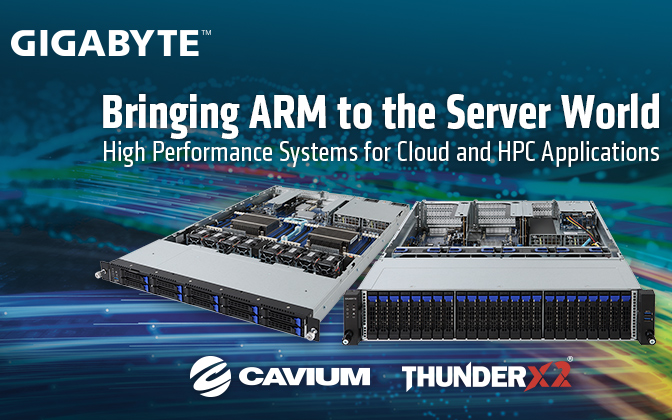
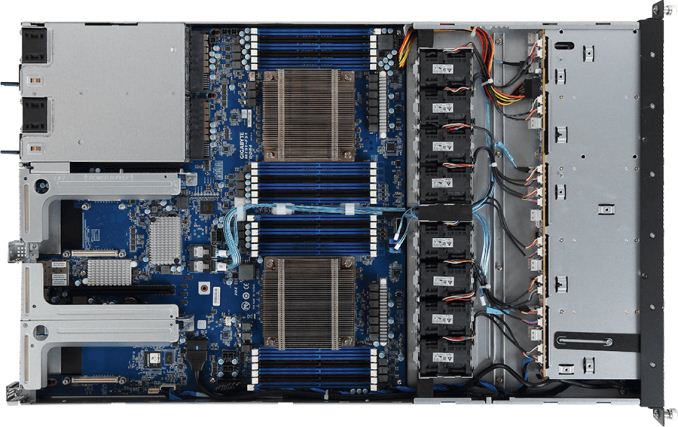
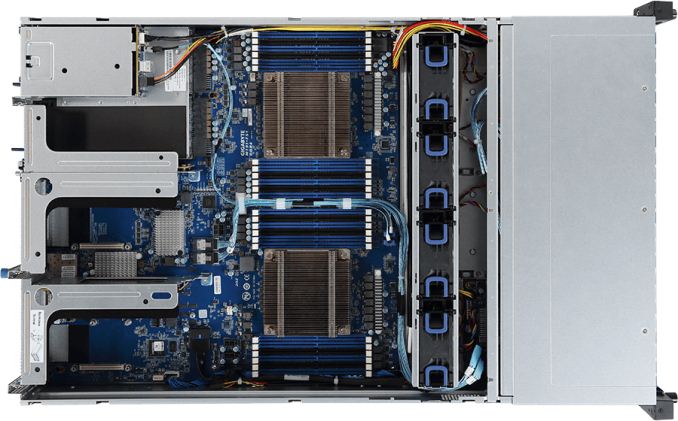
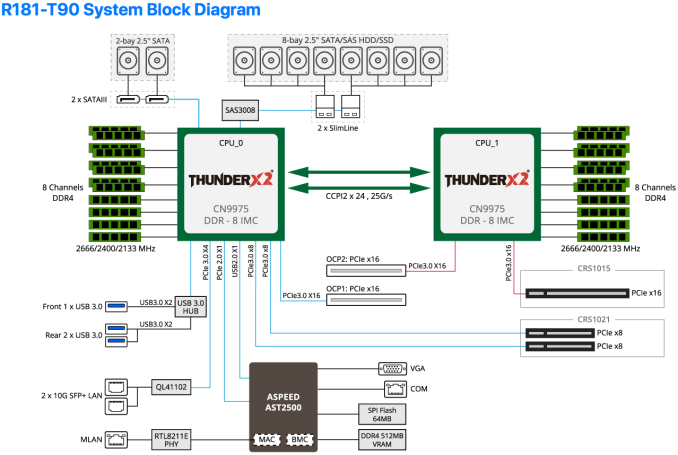
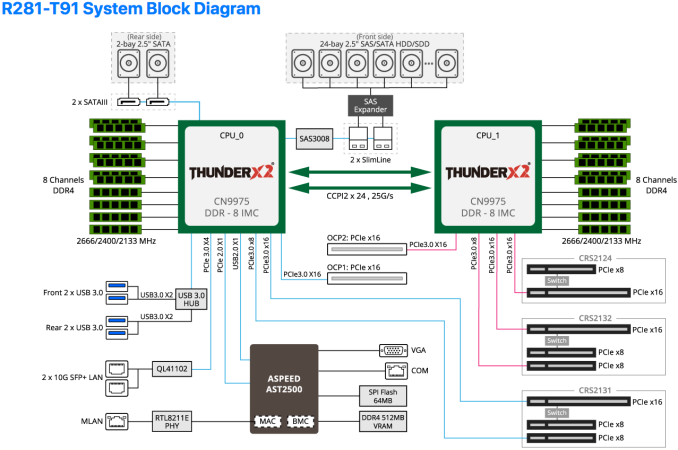
No comments:
Post a Comment